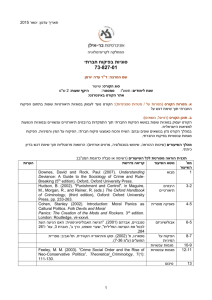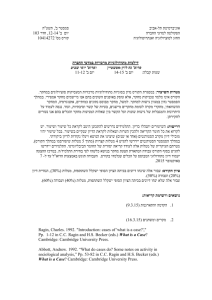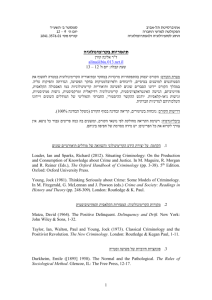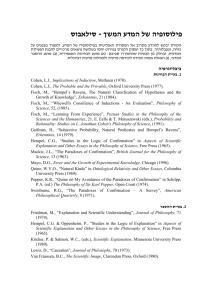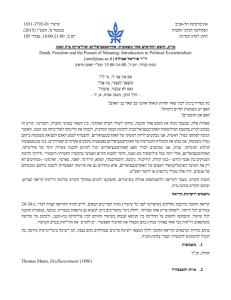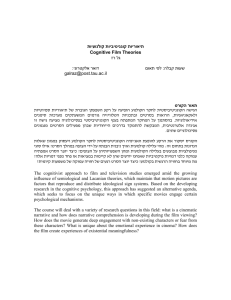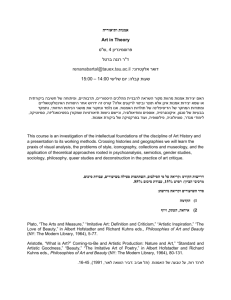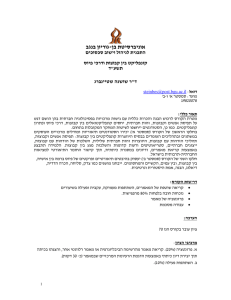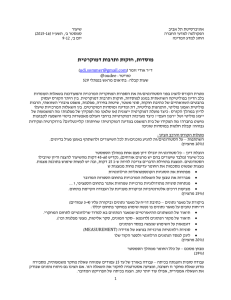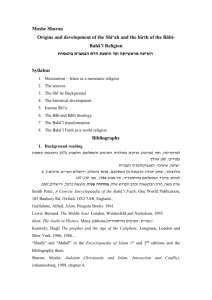Citizenship Education in a Pluralistic Society
advertisement
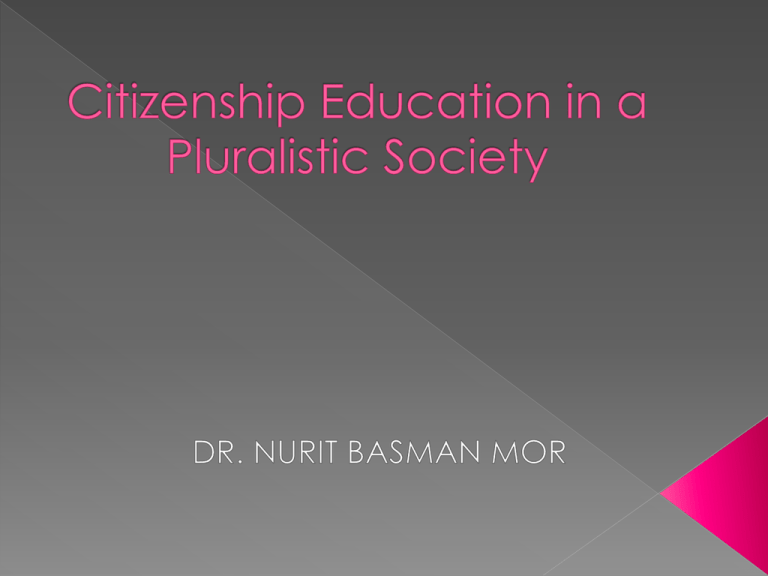
A society that is composed of groups which are different from one another in their language, and/or culture, and/or religion, and/or national identity. In a pluralistic society there is no consensus concerning the values that determine how one should behave in order to be considered as a good citizen. a liberal democratic society is the most tolerant political system concerning diversity. There are some virtues which are required in a liberal democracy. 1. liberal virtues: a. a justice instinct. b. a public spirit (a public reasonableness). c. civility. 2. a common identity. , יובל. י, מנוחין. י: בתוך," "דילמות של חינוך לאזרחות בדמוקרטיות פלורליסטיות,)2005( . ו, קימליקה .56-37 : ירושלים, מאגנס, האם הסובלנות תנצח? חינוך מוסרי בעולם מגוון,)(עורכים Kymlicka, W. (2003), "Two Dilemmas of Citizenship Education in Pluralistic Societies", A. Lockyer, B. Crick, J. Annette (eds.), Education for Democratic Citizenship, Ashgate: 47- 63. Macedo, S. (1990), Liberal Virtues: Citizenship, Virtue and Community, Oxford: Oxford University Press. The best way for developing the liberal virtues is by common heterogeneous schools. Conservative religious groups often feel threatened by heterogeneous education that increases the interaction and acquaintance with members of different groups and hence the likelihood that individuals will learn and adopt new ways of life. Most Western democracies generally accept the demand to establish separate schools. Even if they claim to enforce the liberal virtues through mandatory common curriculum they do not actively monitor whether these virtues are being thought. This strategy reflects the “liberal wager” (Kymlicka 2003); the hope and expectation that a liberal democracy has a “gravitational pull” that draw illiberal groups into its orbit. A common identity in a liberal pluralistic state, can be established on the citizens’ engagement in common social and political institutions that are based on their common language, indicate to the same common history and maintain its memory. Kymlikca, W. (1995), Multicultural Citizenship: A Liberal Theory of Minority Rights, Oxford: Oxford University Press. Spinner, J. (1994), The Boundaries of Citizenship: Race, Ethnicity and Nationality in the Liberal State, Johns Hopkins University Press, Baltimore. Tamir, Y. (1993), Liberal Nationalism, Princeton: Princeton University Press. In states that include one or more national minorities there are some difficulties concerning citizenship education that remain to be resolved: Who has the sovereignty? Which language has the priority in the curriculum? Which level of political community exercises jurisdiction over education?
